
Communication Sciences and Disorders-CSD
Scope & Guideline
Innovating practices in communication disorders since 2013.
Introduction
Aims and Scopes
- Language Development and Disorders:
Research on typical and atypical language development, including studies focused on children with language delays, speech sound disorders, and bilingual language acquisition. - Cognitive and Neurological Aspects of Communication:
Exploration of the cognitive processes underlying language use, including studies on aphasia, dementia, and the effects of cognitive impairments on communication. - Intervention and Therapeutic Approaches:
Development and evaluation of intervention strategies for children and adults with communication disorders, including phonics training, AAC (augmentative and alternative communication), and telepractice. - Family and Social Dynamics in Communication:
Investigations into the role of family interactions, parental involvement, and social factors affecting language and communication skills in various populations. - Assessment and Diagnostic Tools:
Creation and validation of assessment tools and methodologies for diagnosing communication disorders across different age groups, including automated systems and observational measures. - Cultural and Linguistic Diversity:
Research that addresses the impact of cultural and linguistic diversity on communication practices, including studies on bilingualism and multicultural family dynamics.
Trending and Emerging
- Telepractice and Remote Interventions:
A significant increase in studies focusing on telepractice and remote interventions, especially in light of the COVID-19 pandemic, highlighting the need for accessible treatment options. - Interdisciplinary Approaches:
Emergence of research that integrates insights from cognitive psychology, neuroscience, and technology to enhance understanding and treatment of communication disorders. - Impact of Technology on Communication:
Growing interest in how technology affects communication, including the use of AAC devices, mobile health applications, and the role of artificial intelligence in assessment and intervention. - Cultural Competence in Communication Disorders:
An increasing focus on understanding communication disorders within diverse cultural contexts, emphasizing the importance of culturally responsive practices in assessment and intervention. - Parent and Caregiver Involvement:
Emerging studies that examine the role of parents and caregivers in supporting language development and communication skills, particularly in early intervention contexts. - Bilingualism and Multilingualism:
A rising interest in the effects of bilingualism and multilingualism on language development and disorders, reflecting the growing diversity in populations being studied.
Declining or Waning
- Traditional Speech Therapy Techniques:
There is a noticeable decrease in studies solely focused on traditional speech therapy methods, as the field increasingly embraces technology and innovative therapeutic approaches. - Generalized Studies on Communication Disorders:
Research papers that provide broad overviews of communication disorders without specific focus on targeted interventions or populations seem to be less frequent. - Non-Evidence-Based Practices:
The journal appears to be moving away from publications that do not adhere to evidence-based practices, reflecting a growing emphasis on scientifically validated methodologies.
Similar Journals
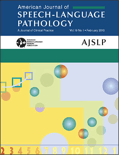
AMERICAN JOURNAL OF SPEECH-LANGUAGE PATHOLOGY
Advancing the Science of Communication and CareAMERICAN JOURNAL OF SPEECH-LANGUAGE PATHOLOGY is a premier publication in the fields of speech-language pathology, linguistics, and related health professions, published by the American Speech-Language-Hearing Association. With an impressive scope that encompasses research, clinical practice, and education, the journal aims to advance knowledge and practices in the diagnosis, treatment, and prevention of communication and swallowing disorders. It holds notable rankings in 2023, including Q2 in Developmental and Educational Psychology and Q1 across key categories such as Linguistics and Language, Medicine (Miscellaneous), Otorhinolaryngology, and Speech and Hearing, reflecting its significant impact and relevance in these domains. The journal’s robust methodology and peer-reviewed articles serve as an essential resource for researchers, practitioners, and students alike, fostering innovation and collaboration within the field. Published continuously since 1996, it provides a platform for disseminating groundbreaking research that influences clinical practices and educational strategies, enhancing the quality of care for individuals with speech and language challenges.
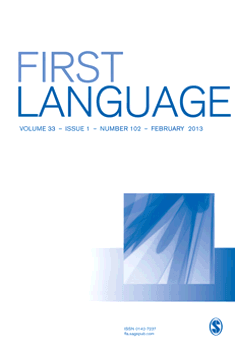
First Language
Illuminating the Pathways of Language LearningFirst Language is a prestigious journal dedicated to the study of language acquisition, development, and use, published by SAGE Publications Ltd. With an ISSN of 0142-7237 and E-ISSN 1740-2344, this journal has been a vital resource in the fields of Education and Linguistics since its inception in 1980. It proudly holds a 2023 Q1 ranking in Linguistics and Language and a Q2 ranking in Education, underscoring its significant impact and contribution to these dynamic fields. Positioned in the 91st and 90th percentiles in Scopus rankings for Language and Linguistics and Social Sciences, respectively, First Language attracts a global readership, fostering rigorous scholarly discussion and exploration. The journal is not Open Access, ensuring that its curated content maintains a high level of academic integrity and exclusivity. With a rich historical scope extending to 2024, First Language serves as an essential platform for researchers, practitioners, and students committed to advancing our understanding of language in all its complexities.
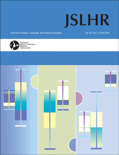
JOURNAL OF SPEECH LANGUAGE AND HEARING RESEARCH
Transforming understanding through empirical research.JOURNAL OF SPEECH LANGUAGE AND HEARING RESEARCH, published by the American Speech-Language-Hearing Association, is a premier peer-reviewed journal dedicated to advancing the fields of speech, language, and hearing sciences. With an impressive impact factor and a strong ranking within the Q1 category of Linguistics and Language and Speech and Hearing, this journal serves as a vital resource for academics and professionals seeking to disseminate groundbreaking research and innovative practices in communication disorders. The journal, which spans actively from 1996 to 2024, offers Open Access options, facilitating broader distribution of knowledge within the scientific community. As evident from its esteemed rankings—such as #11/66 in Health Professions: Speech and Hearing—this journal not only drives forward the knowledge frontiers but also plays a crucial role in shaping policy and practice in health services. Researchers, clinicians, and students alike will find invaluable insights and empirically supported advancements within its pages, making it an essential publication in the landscape of communication and health research.
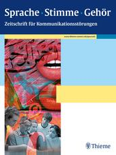
SPRACHE-STIMME-GEHOR
Bridging Knowledge Gaps in Applied Psychology and Speech Therapy.SPRACHE-STIMME-GEHOR is an esteemed academic journal published by GEORG THIEME VERLAG KG since 1980, focusing on the intersection of applied psychology, psychiatry, and speech and hearing. With an ISSN of 0342-0477 and E-ISSN 1439-1260, this journal serves as a vital resource for researchers, clinicians, and students dedicated to advancing knowledge and practice in these fields. Although currently not an open access journal, its rigorous peer-review process ensures the publication of high-quality research and clinical studies. In the 2023 Scopus ranking, it holds a position in the fourth quartile in relevant categories such as Applied Psychology and Speech and Hearing, illustrating its niche yet important role within the scientific community. The journal, based in Stuttgart, Germany, offers insights into innovative therapeutic approaches, evidence-based practice, and the latest trends, making it an essential read for professionals striving to enhance their understanding and impact in speech and hearing disciplines.
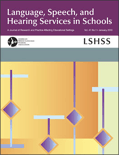
LANGUAGE SPEECH AND HEARING SERVICES IN SCHOOLS
Pioneering research for effective speech and hearing interventions.LANGUAGE SPEECH AND HEARING SERVICES IN SCHOOLS is a leading academic journal published by the American Speech-Language-Hearing Association, dedicated to advancing the fields of linguistics, speech, and hearing within the educational setting. With an ISSN of 0161-1461 and an E-ISSN of 1558-9129, this journal plays a pivotal role in disseminating peer-reviewed research that addresses critical issues faced by speech-language pathologists, educators, and researchers in schools. It has earned a distinguished reputation, ranking in the Q1 category for both Linguistics and Speech and Hearing in 2023, attesting to its impact and relevance in these fields. The journal seeks to publish original research, reviews, and evidence-based practices that improve speech and language services in educational contexts. Although it is not an open-access journal, it remains vital for professionals aiming to enhance communication disorders management in school environments. By bridging theoretical research and practical application, LANGUAGE SPEECH AND HEARING SERVICES IN SCHOOLS serves as an indispensable resource for advancing the scientific understanding of speech and language processing in educational settings.
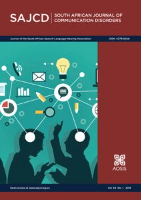
SOUTH AFRICAN JOURNAL OF COMMUNICATION DISORDERS
Innovating Solutions for Communication DisordersSOUTH AFRICAN JOURNAL OF COMMUNICATION DISORDERS, published by AOSIS, is a prominent peer-reviewed journal dedicated to advancing research in communication disorders. With its ISSN 0379-8046 and E-ISSN 2225-4765, this open-access journal has been providing a platform for innovative research since 2010, facilitating the dissemination of knowledge within the South African context and beyond. Its scope encompasses various fields, achieving notable rankings such as Q1 in Linguistics and Language and Q2 in Communication for 2023, highlighting its strong commitment to quality research. The journal has successfully converged its publication years from 1977 to 2024, reflecting its longstanding contribution to the discipline. Researchers and professionals in fields such as cognitive neuroscience, linguistics, and speech and hearing will find this journal an invaluable resource for staying ahead of current trends and developments. As it continuously seeks to bridge gaps in communication disorder research, the journal aims to foster collaboration and innovation within the academic community.
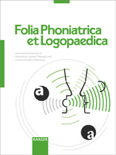
FOLIA PHONIATRICA ET LOGOPAEDICA
Empowering Scholars in the Dynamic World of CommunicationFOLIA PHONIATRICA ET LOGOPAEDICA, published by KARGER in Switzerland, stands as a premier journal in the fields of linguistics, phonetics, and speech therapy. With a rich history beginning in 1949 and spanning multiple decades, this esteemed journal has maintained a commitment to advancing research and scholarship in communication sciences, covering crucial topics relevant to both clinical practice and theoretical frameworks. Holding a prestigious Q1 ranking in Linguistics and Language, the journal also achieves high standings in related categories, with notable placements in Speech and Hearing and Nursing. Researchers, professionals, and students will find the insights and findings published within its pages to be invaluable for both academic pursuits and practical applications. Access options are available through traditional subscription models, enhancing its accessibility for dedicated scholars seeking to contribute to or expand their knowledge in this dynamic field.
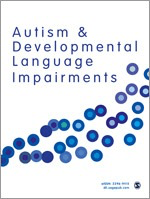
Autism & Developmental Language Impairments
Exploring innovative insights into developmental language impairments.Autism & Developmental Language Impairments is a pioneering peer-reviewed journal published by SAGE Publications Inc that focuses on advancing the understanding of autism spectrum disorders and language impairments across the developmental spectrum. Since its inception in 2016, this open access journal has provided a platform for researchers, practitioners, and educators to disseminate innovative research findings, clinical practices, and theoretical insights, reaching a global audience. The journal is notably indexed in prestigious databases and has established its credibility with a remarkable Rank of Q2 in both Clinical Psychology and Developmental and Educational Psychology as of 2023, solidifying its importance in these vital fields. Based in the United Kingdom, it addresses crucial issues in mental health, reflecting a commitment to fostering advancements that seek to enhance the lives of individuals affected by developmental language impairments. As it converges into its next phase from 2016 to 2024, Autism & Developmental Language Impairments continues to play an essential role in bridging gaps between academia and practice, making it an invaluable resource for researchers, clinicians, and students dedicated to this critical area of study.
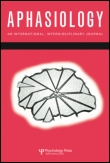
APHASIOLOGY
Connecting Scholars to Transform the Study of AphasiaAPHASIOLOGY is a leading international journal, published by Routledge Journals, Taylor & Francis Ltd, dedicated to the advancement of knowledge in the fields of linguistics, neurology, and communication disorders. With a strong emphasis on interdisciplinary research, the journal spans a wide array of topics related to language processing, aphasia, and associated cognitive functions. Having achieved notable rankings in multiple categories, including Q1 in Linguistics and Language and Q2 in Neurology, APHASIOLOGY boasts an impressive presence in the academic community, reflected in its prestigious Scopus rankings across various fields. Operating without an open access model, the journal ensures rigorous peer-review standards are upheld, promoting high-quality research disseminated to scholars and practitioners alike. As it converges from its inception in 1987 to future milestones set for 2024, APHASIOLOGY remains a vital resource for researchers, healthcare professionals, and students pursuing advanced studies in speech and language pathology, cognitive neuroscience, and related disciplines, effectively addressing the complexities of language and communication through research and scholarship.
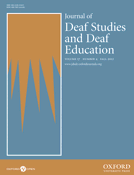
Journal of Deaf Studies and Deaf Education
Transforming educational outcomes for the deaf community.The Journal of Deaf Studies and Deaf Education, published by Oxford University Press, is a leading scholarly resource that focuses on the multifaceted realm of deaf studies, encompassing linguistic, psychological, educational, and social dimensions related to deafness and hearing impairments. With an impactful presence in both the Education (Q2) and Speech and Hearing (Q2) categories, this journal serves as a critical platform for disseminating innovative research and fostering discourse among professionals, educators, and scholars from across the globe. The journal is indexed in high-reputation databases and ranks prominently within the Scopus rankings, indicating its relevance and influence in the fields of Health Professions and Social Sciences. Published quarterly, the journal facilitates comprehensive access to groundbreaking studies and theoretical advancements that aim to improve educational methodologies and outcomes for deaf and hard-of-hearing individuals. As it celebrates two decades of impactful publication from 2004 to 2024, the Journal of Deaf Studies and Deaf Education continues to champion the scholarly pursuits aimed at enhancing understanding and support for the deaf community.